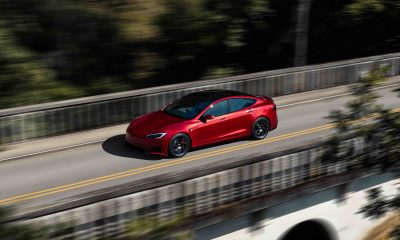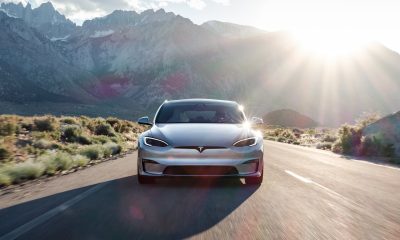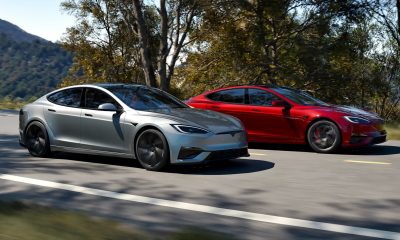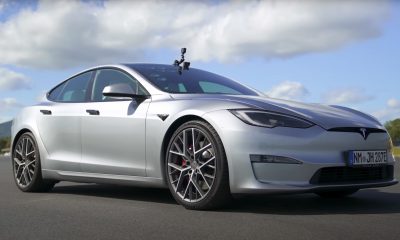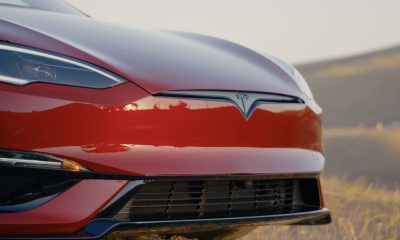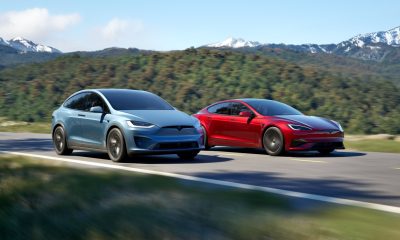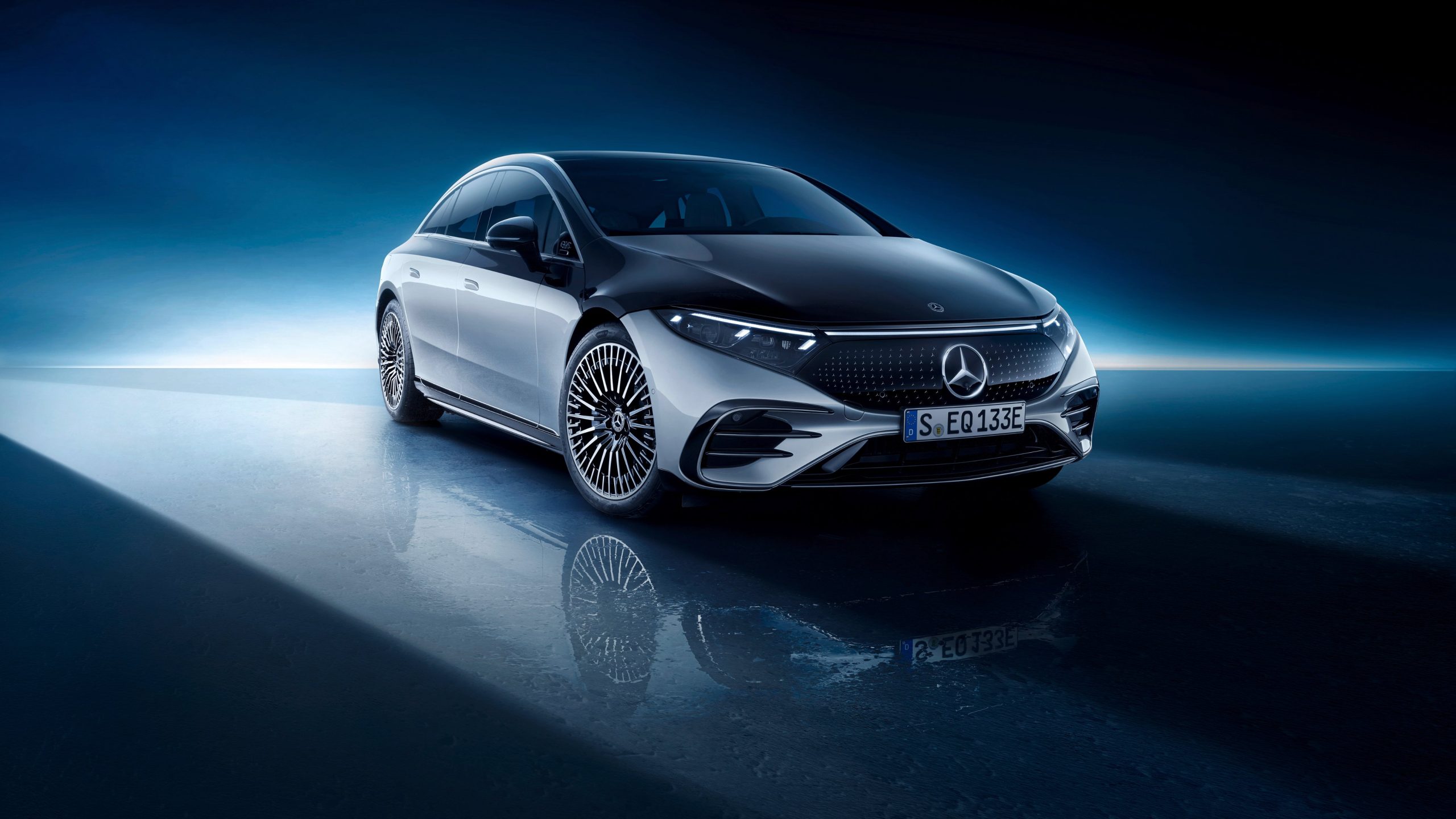
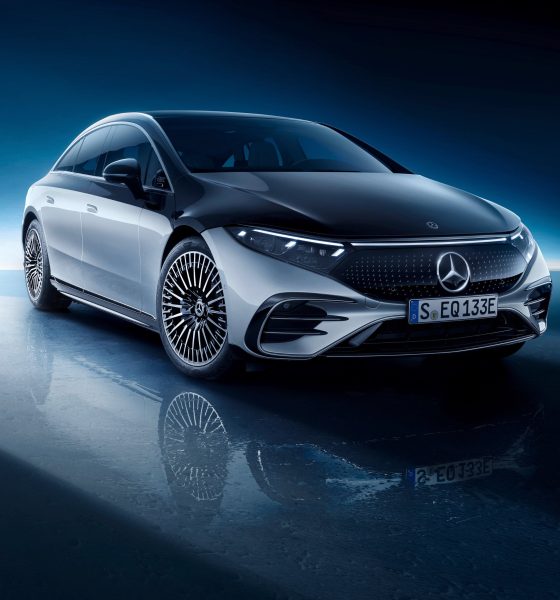
News
Mercedes-Benz unveils the all-electric EQS: 478-mile range, 516 HP, 107.8 kWh battery
Mercedes-Benz has unveiled its all-electric EQS luxury sedan, aiming to take over the luxury electric vehicle market by outpointing the likes of Tesla and Lucid, who also exist in the sector. While the Tesla Model S has been the main staple for those who require a touch of luxuriousness in the all-electric automobile sector, Mercedes-Benz has focused on its fancy and pretty gas-powered engines since its introduction in 1926.
The German Mercedes brand brought out the currently unpriced EQS in a lengthy and detailed press release on Thursday that outlined nearly any question one could ask. Apart from how much the vehicle will cost, Mercedes detailed everything from battery pack capacity, its WLTP-rated range, and its performance specifications, all of which are important figures for anyone interested in getting the most bang for their buck when driving a luxury vehicle. A high five-figure or low six-figure tag is expected to be introduced based on competitors in the same sector. The Model S from Tesla ranges from $79,900 to $149,990, not including incentives, while the Lucid Air ranges from $77,400 to $169,000, also not including incentives.
The EQS will come in two variants: the EQS 450+ and the EQS 580 4MATIC, which will be the more performance-capable build of the vehicle. Mercedes released the following table that outlines the finer points of both of the EQS variants in its press release.
|
EQS 450+ |
EQS 580 4MATIC |
||
| Drive system layout |
Rear-wheel |
All-wheel |
|
| Electric motor(s) |
Model |
Permanently excited synchronous motor(s) (PSM) | |
| Max. powertrain output7 |
kW |
245 |
385 |
| Max. torque transmission output |
Lb-ft |
406 |
611 |
| Acceleration 0-60 mph |
s |
5.5 |
4.1 |
| Top speed8 |
Mph |
130 |
130 |
| Battery energy content, usable (WLTP) |
kWh |
107.8 |
107.8 |
| Rated voltage |
Volts |
396 |
396 |
| Energy recovery capacity, max.9 |
kW |
186 |
290 |
| On-board charger (standard/option) |
kW |
9.6 |
9.6 |
| Charging time10 at wallbox or at public charging station (AC charging, 9.6kW) |
h |
11.25 |
11.25 |
| Charging time11 at a rapid charging station (DC) |
min |
31 |
31 |
| DC charging capacity, max. |
kW |
200 |
200 |
| DC charging in 15 minutes12 (WLTP) |
km |
Up to 300 |
Up to 280 |
| Vehicle | |||
| Length/width/height (USA) |
in |
205.4/83.7/59.5 |
|
| Track front/rear |
in |
65.6/66.2 |
|
| Turning circle (with rear-axle steering 4.5°/10°) |
ft |
39/35.7 |
|
| cd value from |
0.2013 |
||
Mercedes-Benz and Daimler CEO Ola Kaellenius said the all-electric EQS is ready for the most critical and picky customers that the automaker has dealt with in its history. “The EQS is designed to exceed the expectations of even our most discerning customers. That’s exactly what a Mercedes has to do to earn the letter ‘S’ in its name. Because we don’t award that letter lightly.”
The United States’ first models of the EQS will pack 516 horsepower and 770 kilometers or 478 miles of range, according to WLTP ratings.
The EQS has been in testing for a while. Last summer, Teslarati captured images of the EQS being benchmarked against some of its most notable competitors in Germany, including the Model S. The vehicle was outfitted with a camouflage wrap that concealed many of its exterior features, running spirited laps at the Mercedes Research and Development Center in Sindelfingen, Germany. The test facility is located outside of Stuttgart, where both Mercedes and Porsche are headquartered. Its wide, bulky build was reminiscent of the Tesla Plaid Model S that was spotted initially at the Nürburgring in Germany in 2019.
While somewhat reminiscent of other Mercedes-Benz models, the EQS’ rounded edges on the quarter panels give it a sportier look than the 2021 S-Class 450 SE, which is much more squared off at the corners of the vehicle.
Mercedes EQS EV spied benchmarking against Tesla Model S and Model 3
The interior of the car fits the luxury image that Mercedes has maintained for many years. Its futuristic cockpit includes the 56-inch wide “Hyperscreen” that Mercedes unveiled in January. The MBUX Hyperscree also offers a completely new way to control interaction and entertainment, bringing apps and functions into one simple but extensive touchscreen display.
The wait is almost over: Our all-electric #EQS will have its world premiere tomorrow at 6.00 p.m. (CEST).#MercedesEQ #ProgressiveLuxury pic.twitter.com/HFs5qdaWMX
— Mercedes-Benz (@MercedesBenz) April 14, 2021
It was important for Mercedes to maintain its own standards for the EQS. Not wanting to go with a minimalistic interior that Tesla has adopted for its vehicles, the EQS includes the typical bells and whistles that vehicles have equipped for decades.
“I think giving people that very futuristic feel that you’re actually driving something different will be appealing for some buyers,” Jessica Caldwell, executive director of insights at Edmunds.com, said to CNBC.
Mercedes’ press release regarding the EQS can be found here, it’s quite lengthy and will answer most of the questions some may have regarding the vehicle’s finer points.
News
Elon Musk shuts down Tesla ‘AMG’ division speculation: ‘Focus is autonomy’
“I think it’s best to leave that to the custom shops. Tesla’s focus is autonomous cars, building futuristic autonomous cars. We want the future to look like the future.”
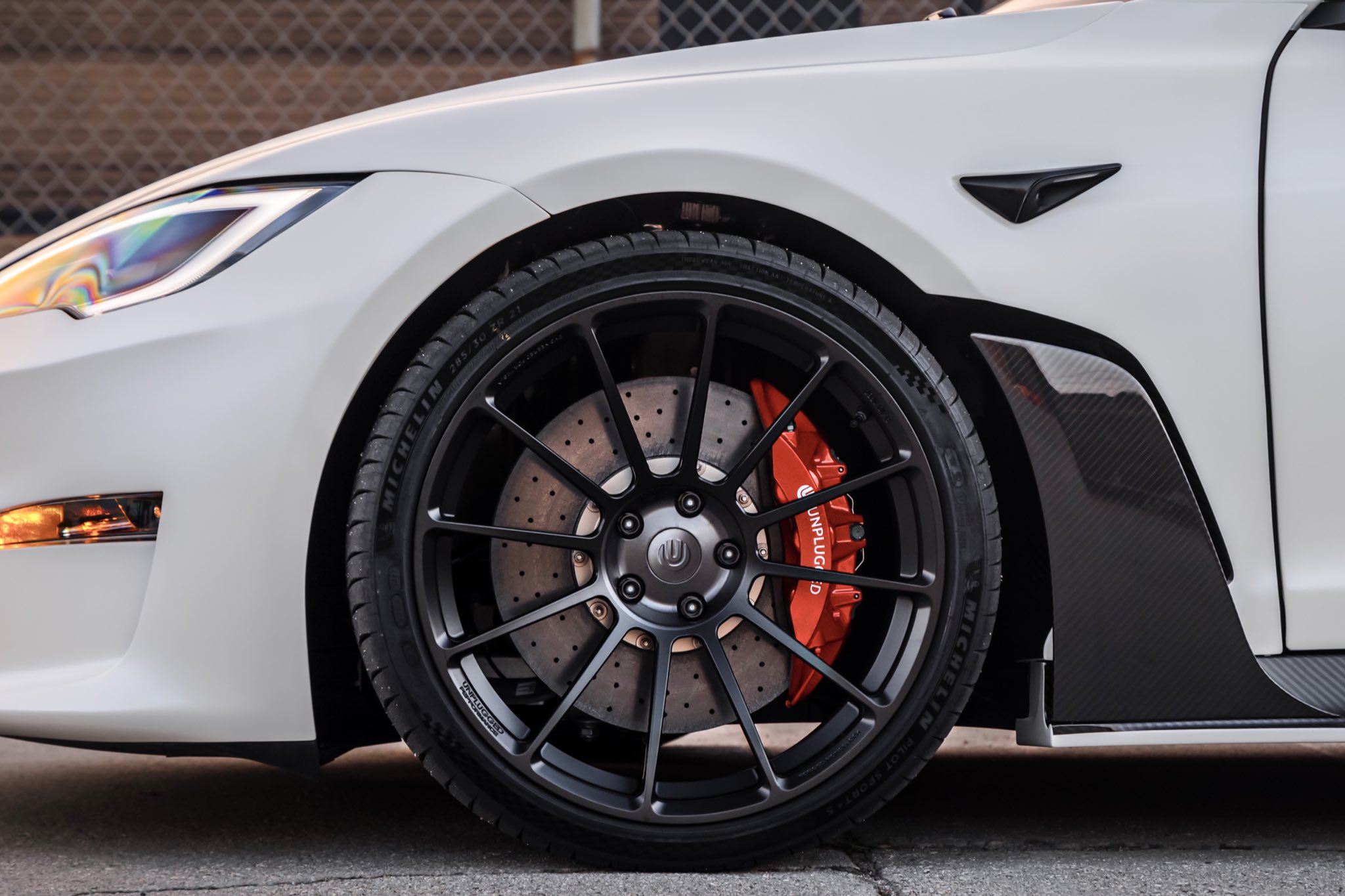
Tesla CEO Elon Musk was asked by Joe Rogan late last week whether the company would ever consider establishing an “AMG division” like Mercedes-Benz has established for powerful, race-inspired vehicles.
However, Musk turned down any talk of that, highlighting that the company is laser-focused on autonomous vehicles, seemingly hinting that any distraction from autonomy would be a detriment to the future.
Rogan drives a Tesla Model S himself, but it is not your run-of-the-mill all-electric sedan. Already outfitted with the Plaid powertrain that Tesla developed, Rogan took his vehicle to Unplugged Performance for a true performance outfitting.
The vehicle is completely overhauled with performance parts and seats. Known as the Model S-APEX, Rogan took delivery of it from Unplugged in January.
Rogan asked Musk on Friday during his most recent appearance on the Joe Rogan Experience podcast whether Tesla would ever establish an “AMG division” that would focus on catering Teslas to performance-based standards.
Musk said:
“I think it’s best to leave that to the custom shops. Tesla’s focus is autonomous cars, building futuristic autonomous cars. We want the future to look like the future.”
🚨 Elon Musk was asked by Joe Rogan if he would ever create an “AMG division” where customization and performance options are available.
Musk said:
“I think it’s best to leave that to the custom shops. Tesla’s focus is autonomous cars, building futuristic autonomous cars. We… pic.twitter.com/k7qy7UQc60
— TESLARATI (@Teslarati) October 31, 2025
Tesla fans have said for years that the company should consider acquiring Unplugged Performance and its Upfit Tesla division, which recently outfitted the Las Vegas Metropolitan Police Department’s fleet of Cybertruck cruisers.
However, it seems Tesla will keep things separate. Musk is primarily focused on autonomy, which will drive the technology forward and drive shareholder growth. Something like an outfitter for performance would be a cool thing for the owners who have the interest and the money.
It’s not a tremendous revenue driver or anything that would contribute to the financial state of the company. Mercedes-Benz, for example, is more accessible for consumers as it sold over 140,000 units from its AMG brand in 2024.
Tesla Model Y driver starts race in reverse, still wins against AMG SUV
It helps with driving revenue higher by as much as 15 percent compared to similar models that are not AMGs. However, would Tesla see this much of a benefit? Likely not, because the Performance trim already caters to many owners.
Cybertruck
Tesla Cybertruck fleet takes over at SpaceX’s Starbase
Interestingly, the Cybertruck uses the same exterior, a stainless steel alloy, as SpaceX rockets. This synergy between the two companies and their very different products shows a very unified mentality between Musk companies.
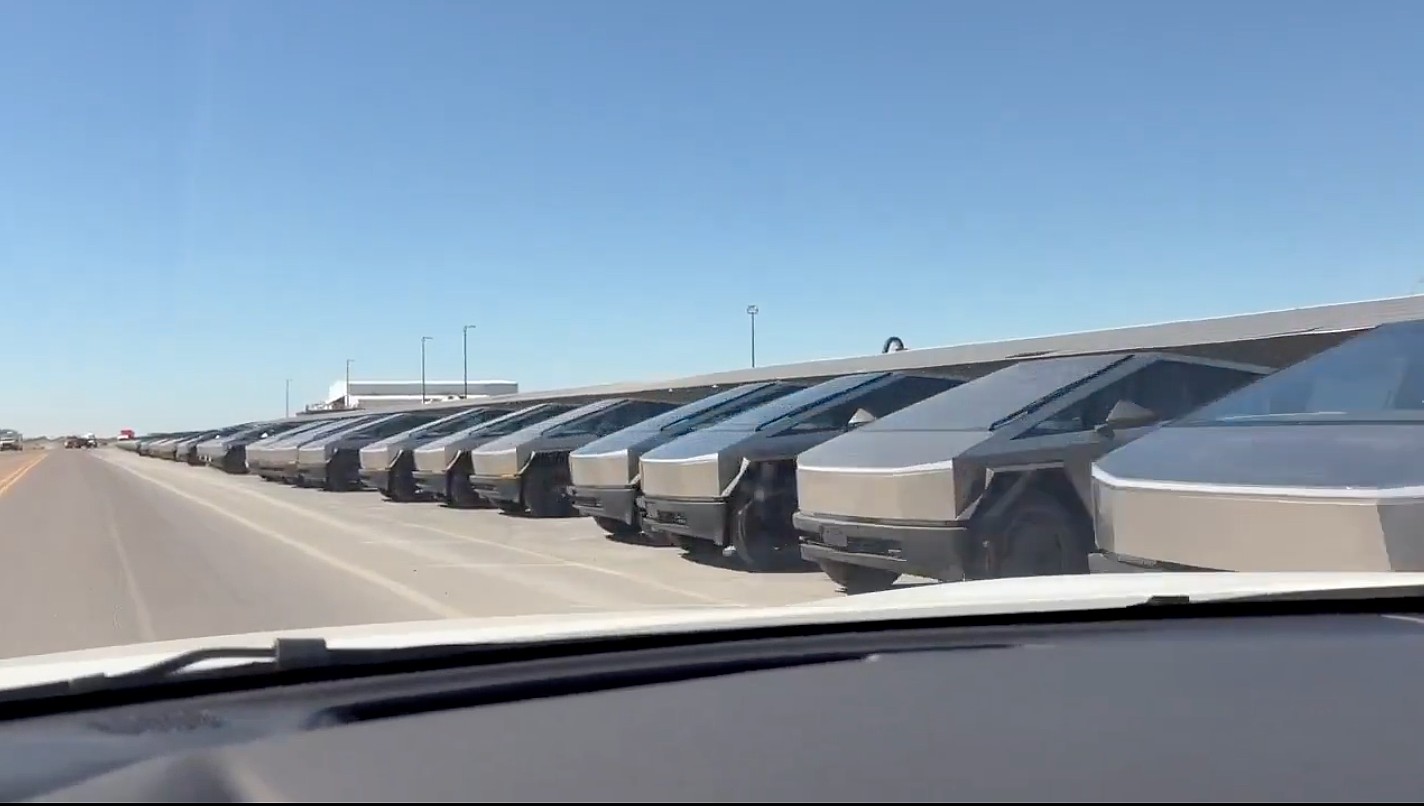
Tesla Cybertrucks have taken over at SpaceX’s Starbase facility in Texas, as hundreds of the all-electric pickup trucks were spotted late last week rounding out a massive fleet of vehicles.
The Cybertruck fleet is geared toward replacing gas vehicles that are used at Starbase for everyday operations. The only surprise about this is that it was not done sooner:
Was just visiting. pic.twitter.com/5Q9wPPaeuH
— Derek Li (@derek1ee) October 31, 2025
Deliveries have been going on for a few weeks, as Cybertrucks have made their way across the state of Texas from Austin to Starbase so they could be included in SpaceX’s fleet of vehicles at the facility.
Interestingly, the Cybertruck uses the same exterior, a stainless steel alloy, as SpaceX rockets. This synergy between the two companies and their very different products shows a very unified mentality between Musk companies.
However, there are some other perspectives to consider as SpaceX is utilizing such a massive fleet of Cybertrucks. Some media outlets (unsurprisingly) are seeing this as a move of weakness by both Tesla and SpaceX, as the aerospace company is, in a sense, “bailing out” lagging sales for the all-electric pickup.
It’s no secret that Tesla has struggled with the Cybertruck this year, and deliveries have been underwhelming in the sense that the company was anticipating between 1 million and 2 million orders for the vehicle before it was widely produced.
A lot of things changed with the Cybertruck between its 2019 unveiling and 2023 initial deliveries, most notably, price.
The price of the Cybertruck swelled significantly and priced out many of those who had pre-ordered it. Some have weighed the option of whether this purchase was a way to get rid of sitting inventory.
However, it seems more logical to consider the fact that SpaceX was likely always going to transition to Teslas for its fleet, especially at Starship, at some point.
It doesn’t seem out of the question that one Musk company would utilize another Musk company’s products, especially considering the Cybertruck has been teased as the vehicle that would be present on Mars.
Elon Musk
Elon Musk subtly confirms one of Tesla AI8’s uses, and it’s literally out of this world
Elon Musk appears to have subtly confirmed that Tesla’s upcoming AI8 chip won’t be limited to vehicles or robots alone.
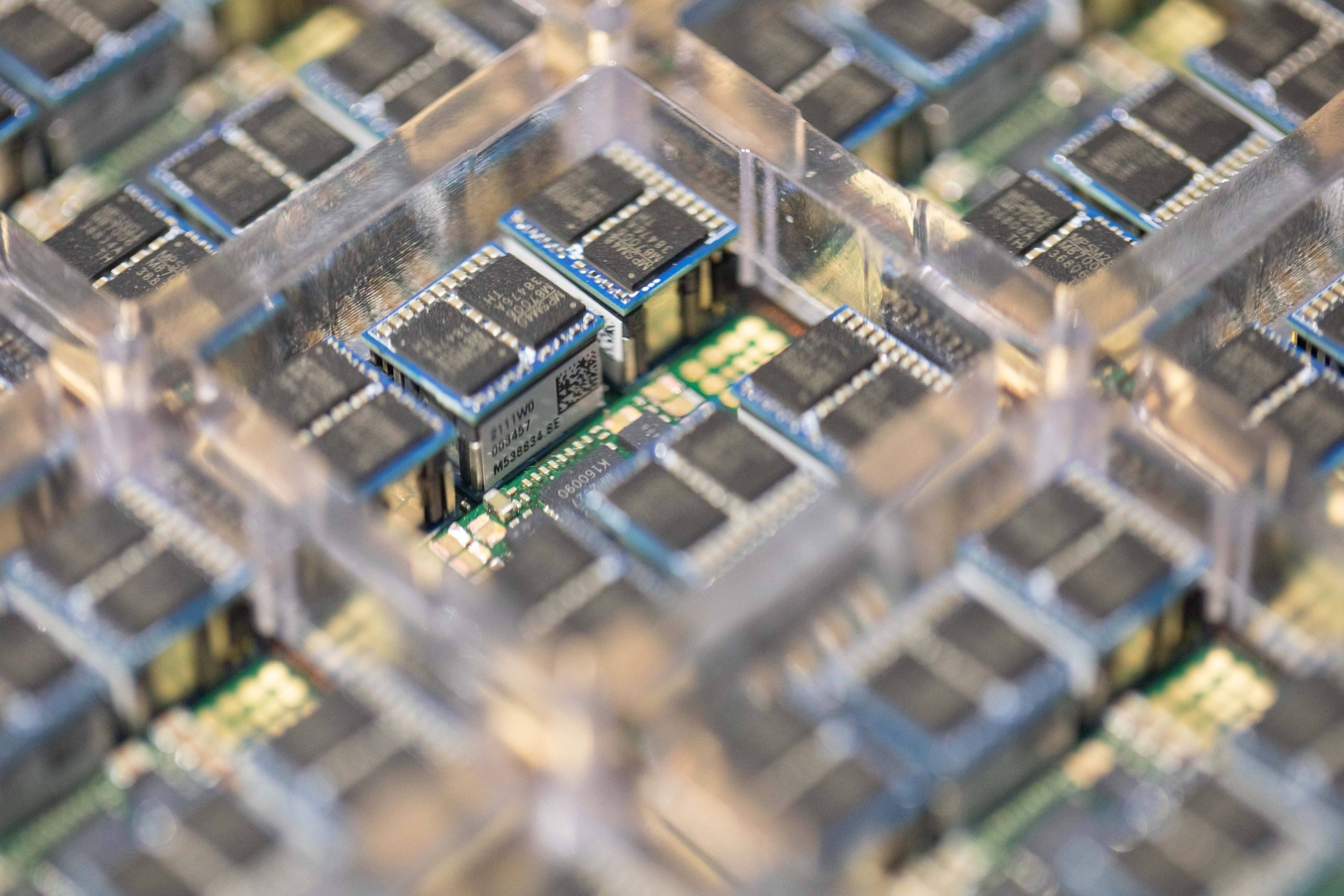
Elon Musk appears to have subtly confirmed that the uses of Tesla’s upcoming AI8 chip won’t be limited to vehicles or humanoid robots alone.
If Musk’s recent responses on X are any indication, it would appear that Tesla’s AI8 will be used by the CEO’s other companies, and its applications would literally extend out of this world.
Tesla’s AI8 could extend beyond vehicles
Musk’s update came on the heels of his recent comments, where he revealed that Tesla was not just working on its AI5 and AI6 chips. The company is also designing AI7 and AI8. This comment caught a lot of attention, with some wondering why Tesla feels the need to design an AI8 chip when AI4 seems on track to be a good fit for autonomous driving.
Amidst these speculations, an X user suggested that Elon Musk’s comment about AI8 being out of this world could actually be quite true in the literal sense, as it could be used as the chip for SpaceX’s orbit data centers. Musk subtly confirmed this, as he responded to the X user’s post with a bullseye emoji.
Musk’s subtle confirmation that AI8 will be used by SpaceX’s in-space data centers presents a pretty interesting future for the electric vehicle maker. Synergy among Elon Musk-led companies is nothing new, but having Tesla produce chips for SpaceX is undoubtedly something that’s never really been done before.
SpaceX’s space-based computing with Starlink V3 satellites
Musk previously stated that SpaceX plans to use its Starlink V3 satellites to develop space-based data centers. In response to an Ars Technica report on autonomous space construction, he wrote on X: “Simply scaling up Starlink V3 satellites, which have high-speed laser links, would work. SpaceX will be doing this.”
The concept, while ambitious, could address growing energy and cooling constraints facing Earth-based data centers amid the AI boom. Space-based clusters could also cut down on land and water usage, though critics have questioned their cost and maintainability.
Musk recently called the orbital data center project “a very big deal,” and given SpaceX’s history of turning improbable ideas into operational systems, it may not be too far-fetched at all, especially since SpaceX’s Starlink V3 platform is capable of up to 1 terabit per second (Tbps) throughput.
-
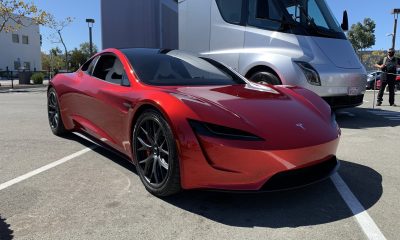
 News2 weeks ago
News2 weeks agoTesla updates fans on its plans for the Roadster
-
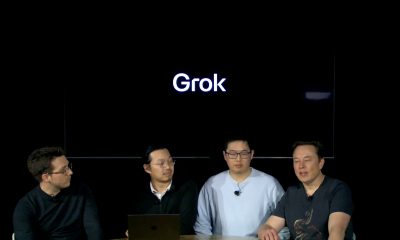
 Elon Musk2 weeks ago
Elon Musk2 weeks agoElon Musk: Grok 5 now has a 10% chance of becoming world’s first AGI
-
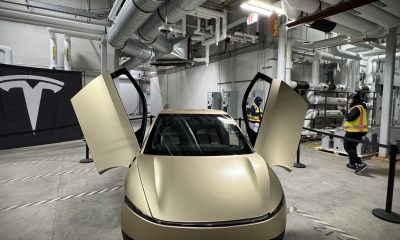
 News2 weeks ago
News2 weeks agoTesla is ramping up its hiring for the Cybercab production team
-
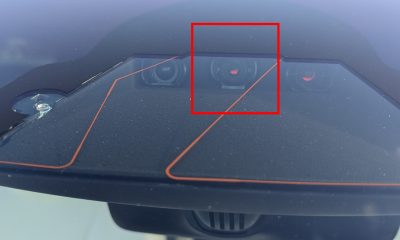
 News2 weeks ago
News2 weeks agoTesla rolled out a new feature with FSD v14 to fix a major complaint
-
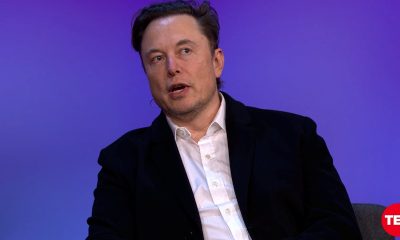
 Elon Musk2 weeks ago
Elon Musk2 weeks agoElon Musk hits back at former Tesla employee who disagrees with pay package
-
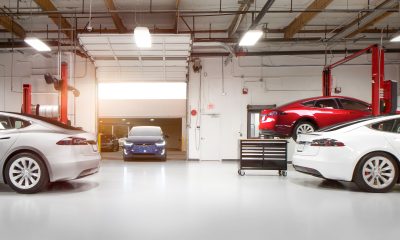
 News2 weeks ago
News2 weeks agoTesla just made Service even easier and more convenient
-
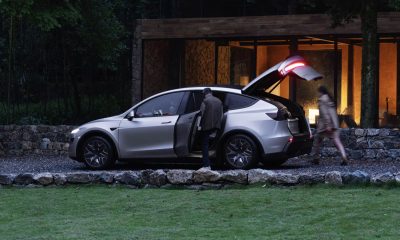
 News2 weeks ago
News2 weeks agoTesla Model Y L becomes China’s 4th best-selling mid-to-large SUV in its first month of sales
-
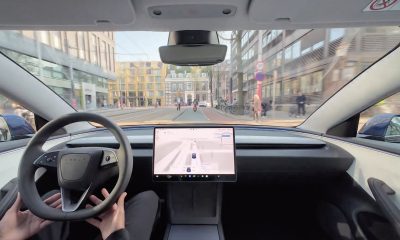
 News2 weeks ago
News2 weeks agoTesla Full Self-Driving’s new version officially gets a wider rollout


